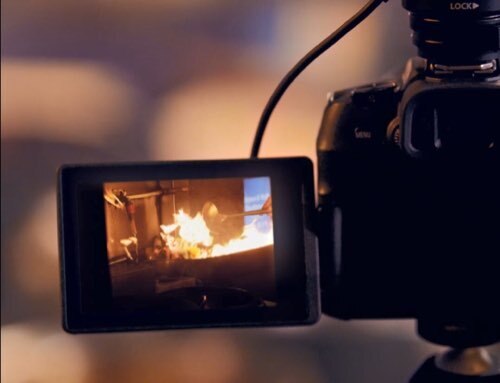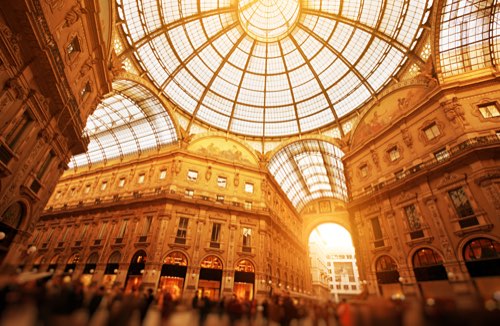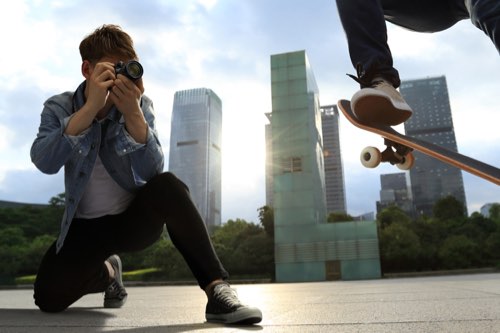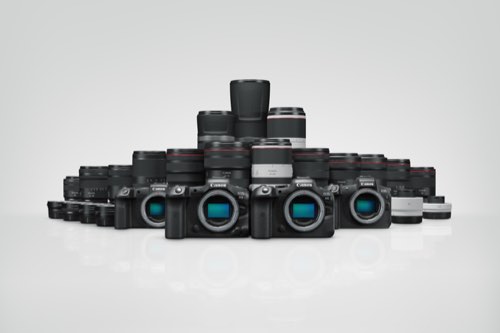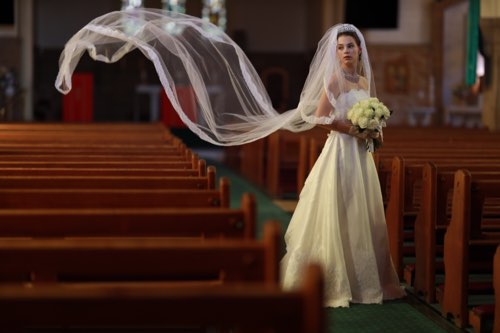Master Your f/2.8 Zoom Lens (2): Creating Depth & Dimensionality
In this 4-part series, we share some ideas for taking full advantage of what your f/2.8 zoom lens can do, as well as tips for fine-tuning them to get a better shot. Because why do what a variable aperture zoom lens can do when your f/2.8 constant aperture zoom can do more?
In Part 1, we shared one major benefit of an f/2.8 zoom lens—beautiful buttery bokeh that highlights your subject. Here in Part 2, find out about a mind-blowing concept that could change the way you approach composition. (Reported by: Chikako Yagi, Digital Camera Magazine)

This is Part 2 of a 4-part series. Click on the links to read the other parts!
- Part 1: Highlighting Your Subject
- Part 3: Try Astrophotography
- Part 4: Up Your Low Light Landscape Photography Game
Bokeh enhances depth perception
In Part 1, we learned how f/2.8 zoom lenses can blur out distracting backgrounds (“create background bokeh), simplifying the composition so your subject stands out better. Besides that, bokeh creates a sort of layering effect, making the scene look more three-dimensional—like there’s more space between the background and foreground.
Compare the two images below. The f/11 image looks flatter than the f/2.8 image. That’s because using f/2.8 to blur out the yellow flowers gives the illusion of more space between the flowers and the tree at the back, which results in a greater sense of depth.
f/2.8

EOS R5/ RF24-70mm f/2.8L IS USM/ FL: 35mm/ Aperture-priority AE (f/2.8, 1/2500 sec)/ ISO 1250/ WB: Auto
f/11

Pro tip: Combine techniques for a greater sense of depth
There are other composition techniques for creating the illusion of depth. For example, you could use a short focal length (wide-angle lens) to shoot from a low angle. This enhances perspective, where nearby objects look larger and nearer, and objects that are farther away look smaller and farther, ultimately contributing to the sense of depth.
Key concept: Consider the subject’s relationship with the foreground and background
When we first discover the wonders of bokeh, it’s natural to get trigger-happy and want to use the widest aperture possible to get that beautiful creamy blur. But as we’ve shown above, bokeh doesn’t just affect the subject, it also affects the foreground and background and how the main subject looks relative to them.
Consider these relationships and the factors that affect them, such as where each object is in the frame, the distances between them, and your distance from them. Depending on the image you envision, stopping down the aperture slightly might give you better results.
Pro technique 1: Use bokeh to separate your layers clearly

EOS R6 Mark II/ RF24-70mm f/2.8L IS USM/ FL: 24mm/ Aperture-priority AE (f/2.8, 1/640 sec, EV-0.3)/ ISO 100/ WB: Auto
Having clear layers in your image (a foreground, middle ground, and background) will give your image more depth and dimensionality, especially in landscape photography where you have less control over the shooting environment. You can do that by placing your subject in the middle ground, and using the shallow depth of field achieved at f/2.8 to blur out the foreground and background while keeping the middle ground clear.
This approach works with any kind of lens—try it for yourself and see the results! For example, you could use it to counter perspective compression when shooting with a telephoto lens so that the image looks less flat.
Pro technique 2: Make use of leading lines to provide visual guidance

EOS R5/ RF24-70mm f/2.8L IS USM/ FL: 30mm/ Aperture-priority AE (f/2.8, 1/6400 sec)/ ISO 160/ WB: Auto
Look out for things that form leading lines from the front to the back of the scene—like the tracks in the image above. They will provide visual guidance, moving your viewer’s eye from the front of the scene to the back and enhancing the sense of depth. For best results, move as close to them as you can, use the widest focal length possible, set the aperture to f/2.8, and place the focus point so that the background behind your subject is blurred out.
Zoom in if you need to cut distractions out of the frame; zoom out to capture more of the object creating the line so you can make the line look longer. That’s the beauty of a zoom lens!
Recap: How to achieve a greater sense of depth
- Compose so your image has obvious layers (foreground, middle ground, background)
- Use f/2.8 bokeh to separate the layers.
- A foreground and/or background that is more blurred out compared to the main subject appears further from it.
- Combine with other composition and lens techniques for better results. Examples: wide-angle lens perspective exaggeration, leading lines.
Other articles related to layered compositions/creating depth:
Recommended f/2.8 zoom lenses
Wide-angle f/2.8 zoom lenses
While the techniques mentioned above can enhance the sense of depth regardless of the lens you use, wide-angle lenses work best because of their perspective exaggeration effect. This makes leading lines look even longer and scenes look even deeper, especially with the right composition techniques!

Left: RF15-35mm f/2.8L IS USM
Right: RF16-28mm f/2.8 IS STM
The RF15-35mm f/2.8L IS USM is a professional-grade lens designed to provide the best possible pictures under the harshest conditions. Besides its dust- and drip-resistant structure that is great for outdoor shooting, it is also engineered with special lenses and coatings so you get clean and clear images even when shooting into backlight.
The RF16-28mm f/2.8 IS STM is a smaller, lighter f/2.8 wide-angle zoom lens for photographers and creators who prioritise portability. Besides its excellent optical quality, it is also weather-sealed, though not to the same extent as its L-series counterpart.
Learn composition techniques that make the most of your wide-angle lens in:
Also see:
Professional Composition Techniques (3): Making Good Use of Lenses
About the Author
A monthly magazine that believes that enjoyment of photography will increase the more one learns about camera functions. It delivers news on the latest cameras and features and regularly introduces various photography techniques.
Published by Impress Corporation
Chikako Yagi was twenty when she started teaching herself photography using a film SLR camera. She left regular employment to become a full-time landscape photographer in 2016. An apprentice of renowned photographers such as Kiyoshi Tatsuno and Tomotaro Ema, she is a member of the Shizensou Club, which was founded by the former and is one of Japan’s most famous landscape photographers’ clubs. In 2013, she was selected as one of the Top 10 Photographers of the Tokyo Camera Club.
www.chikakoyagi.com
Instagram: @chikako_yagi








